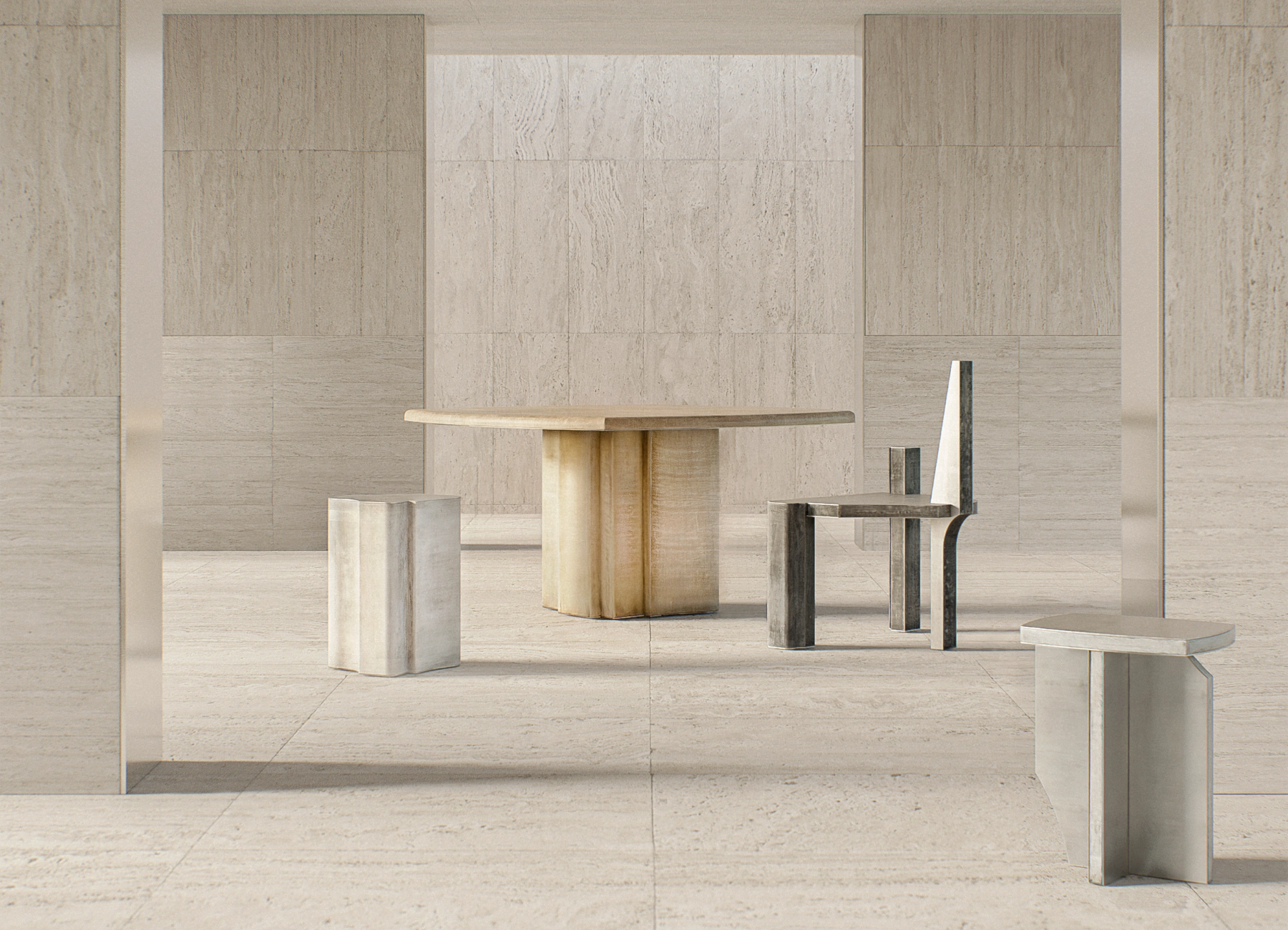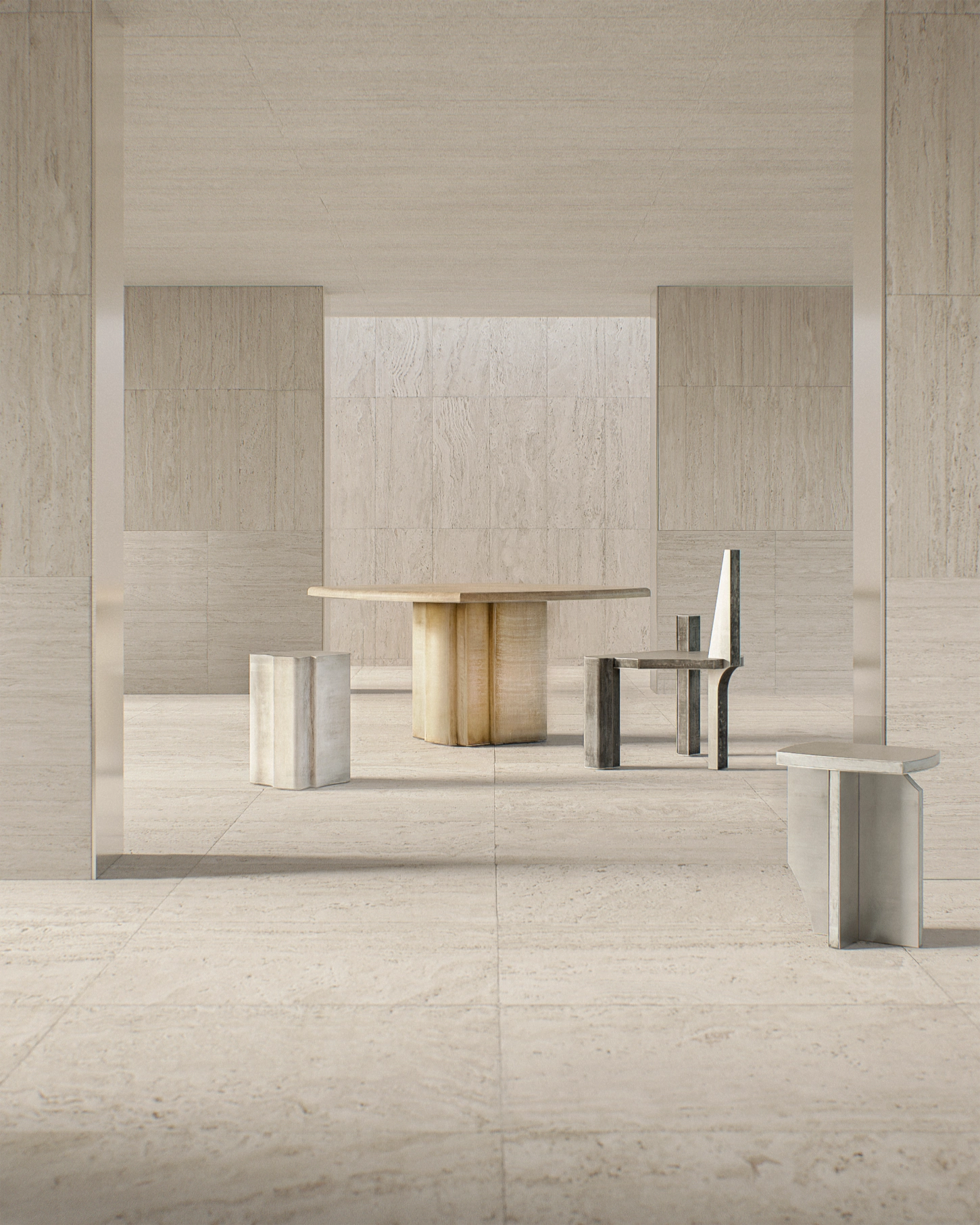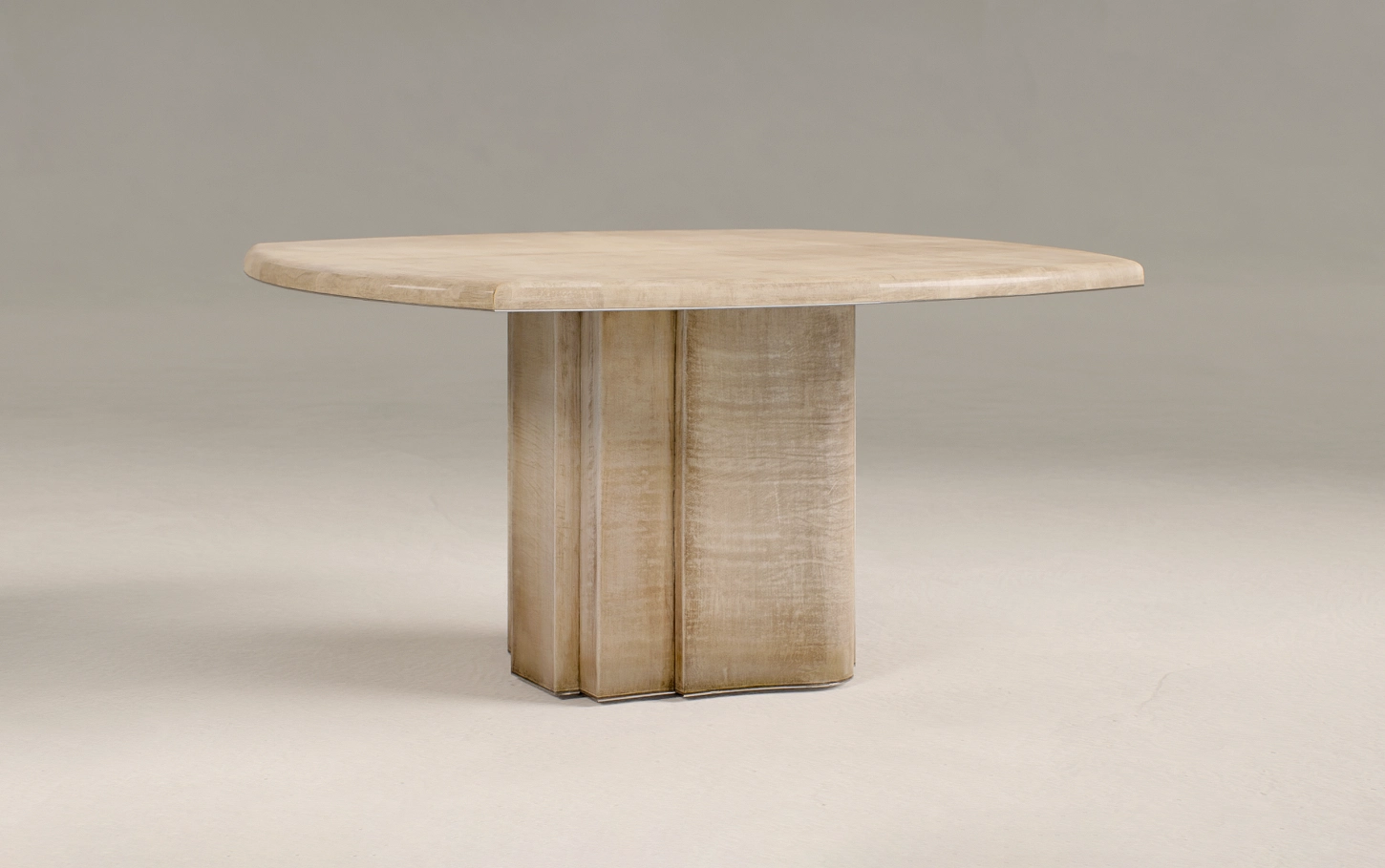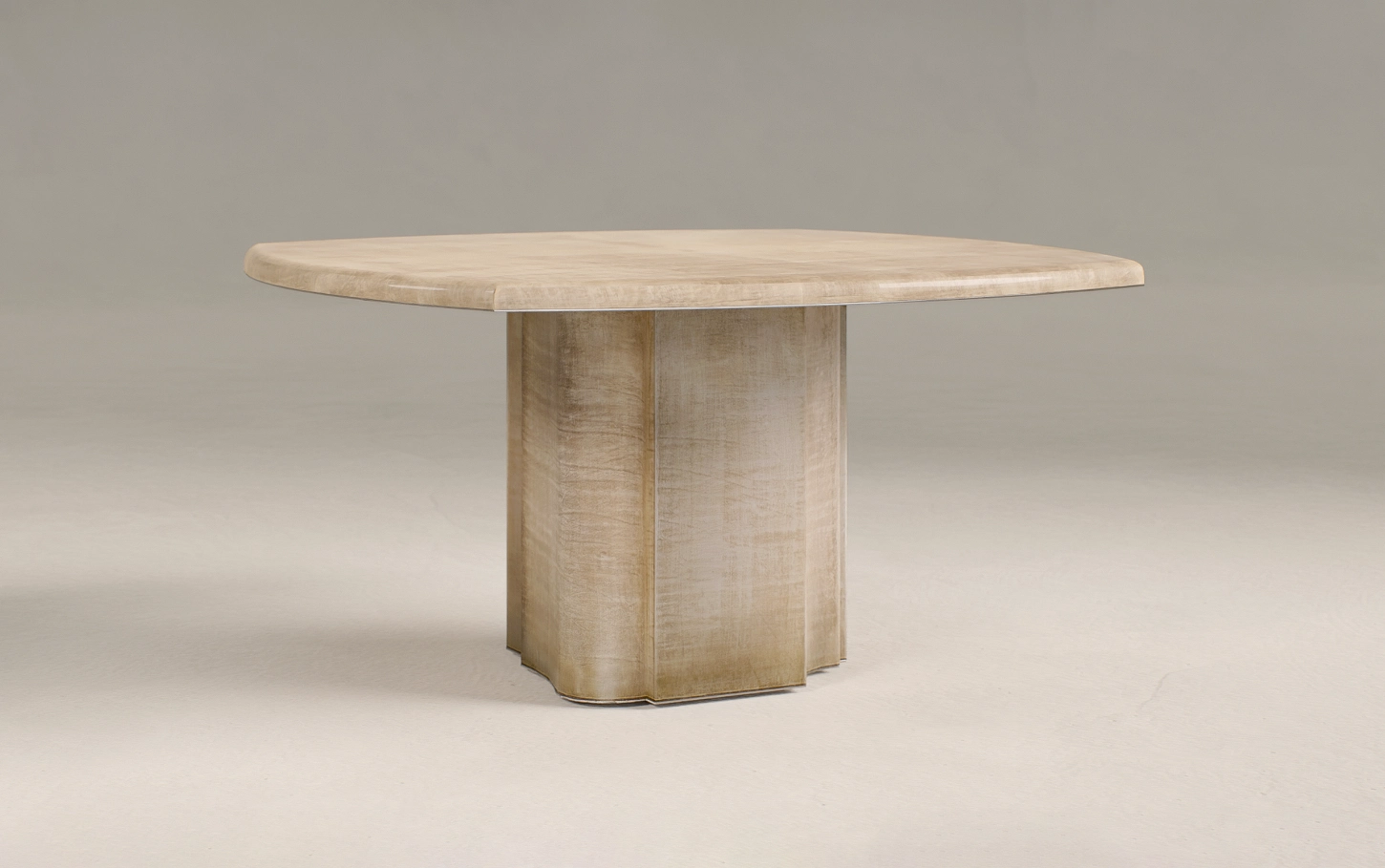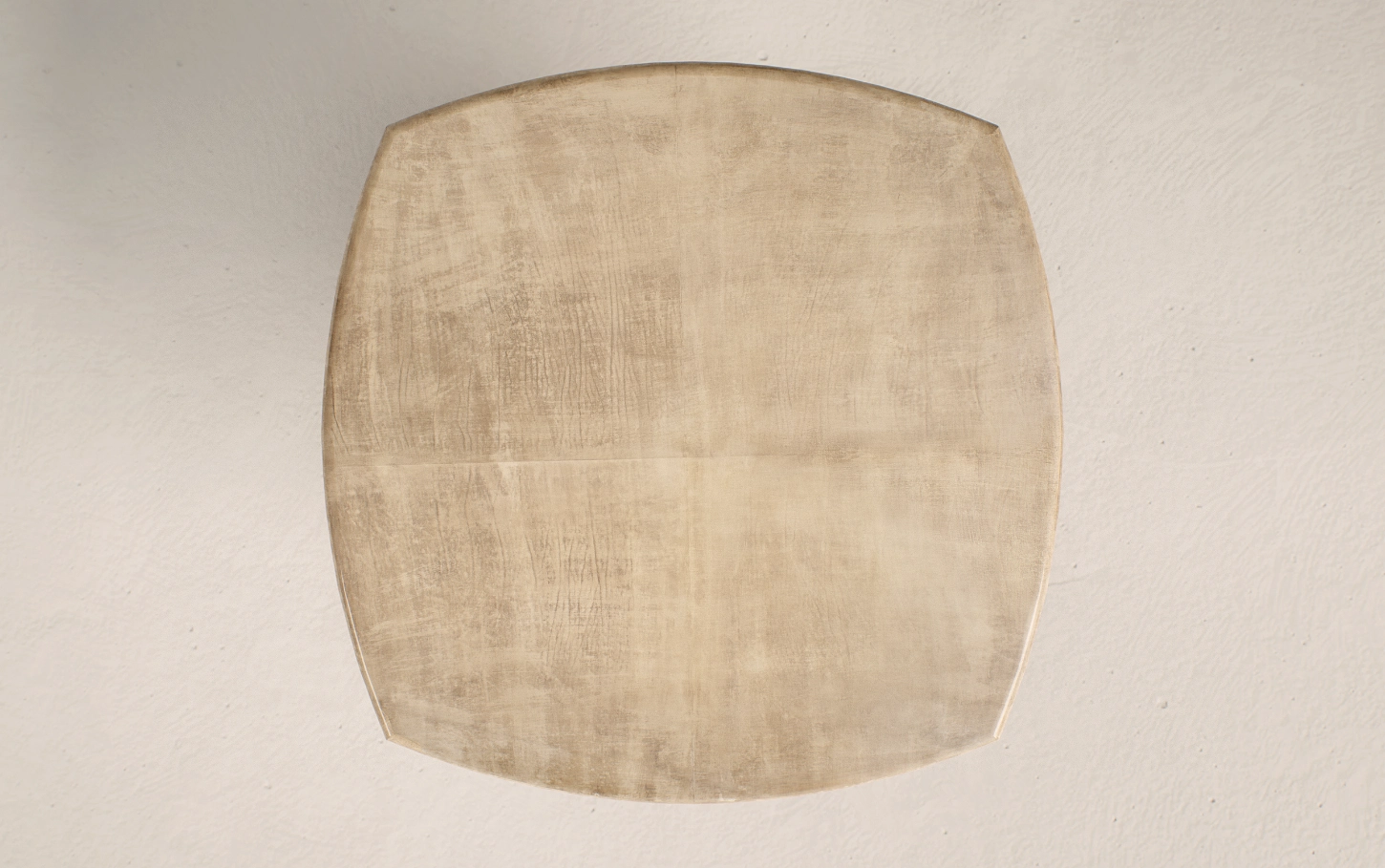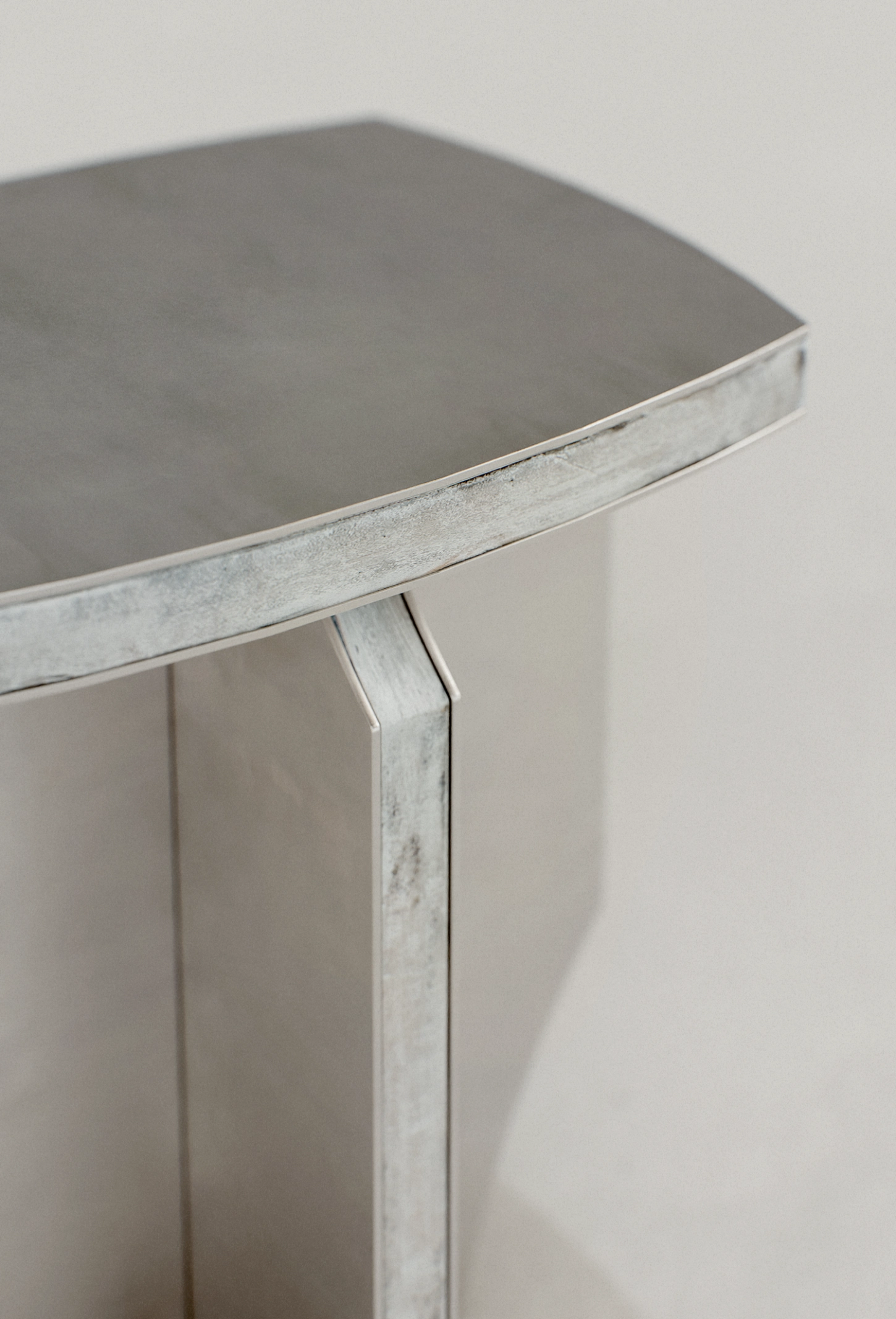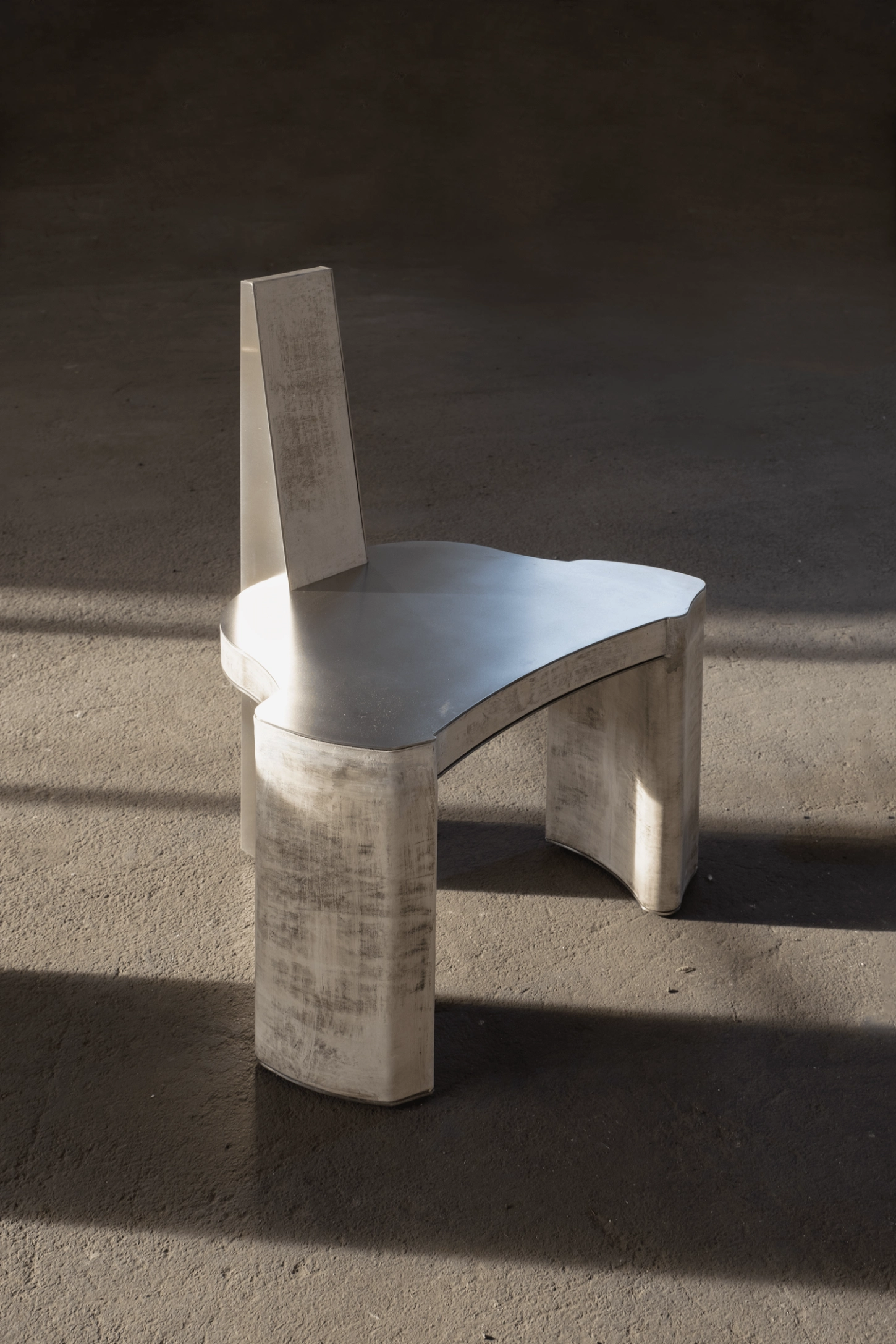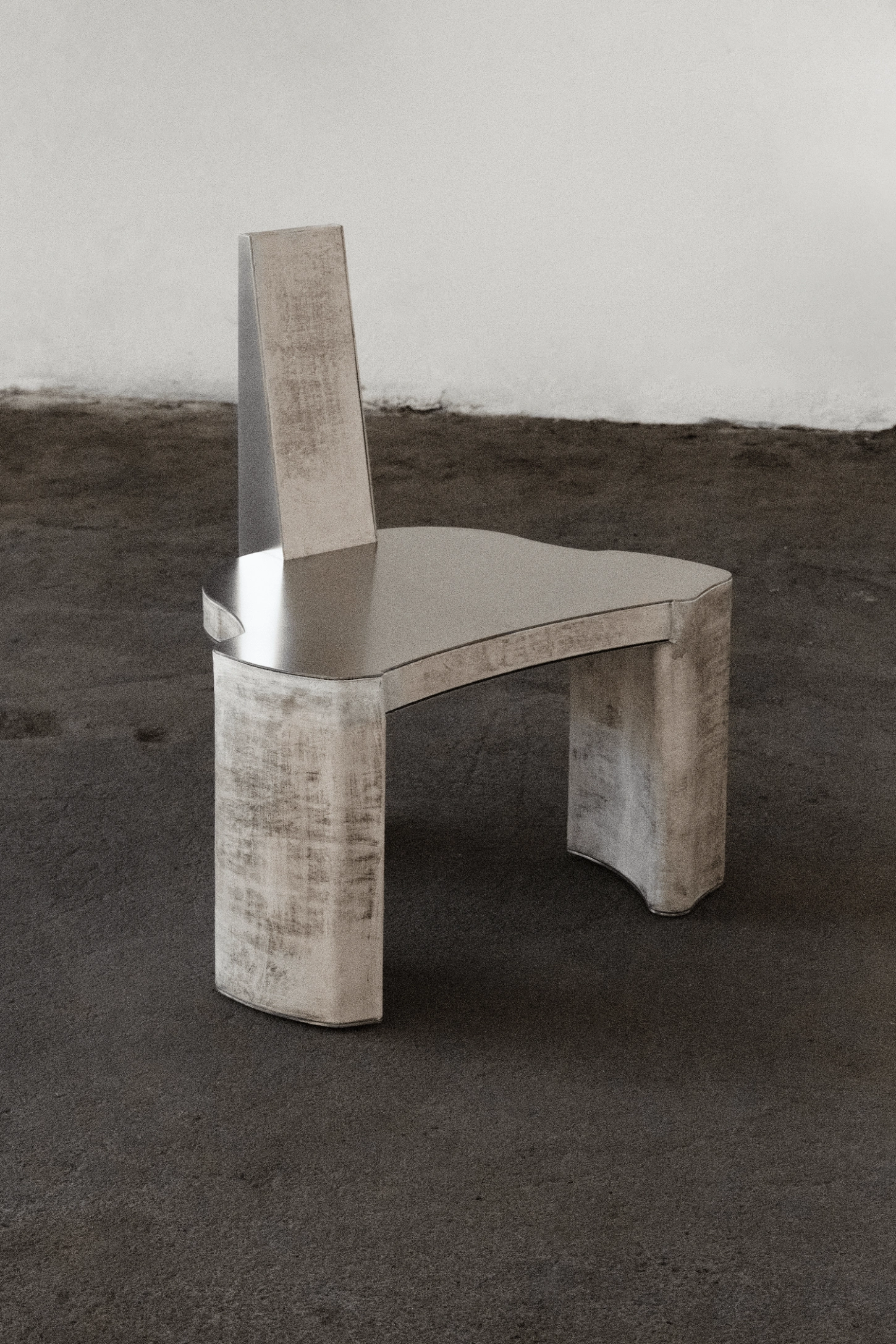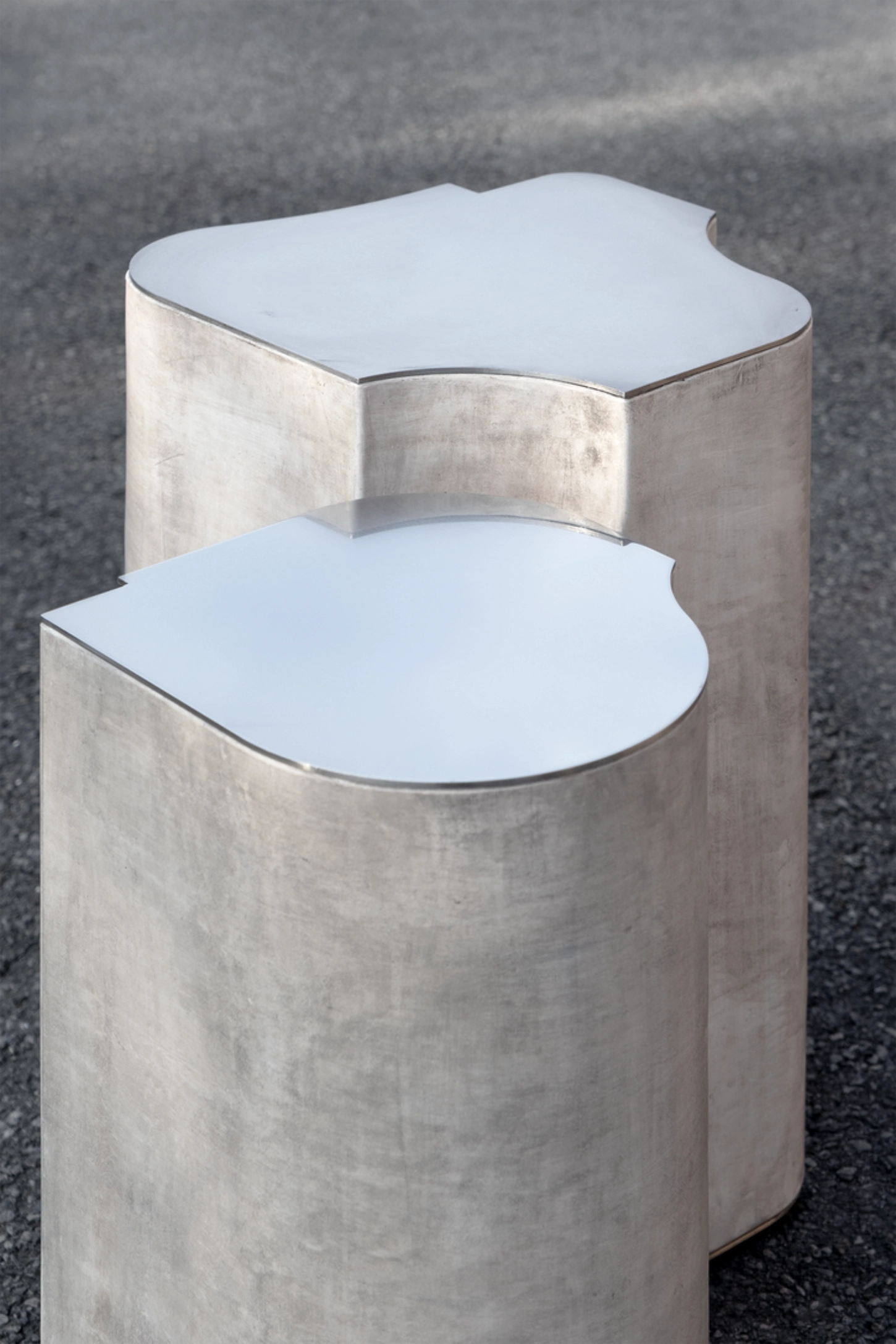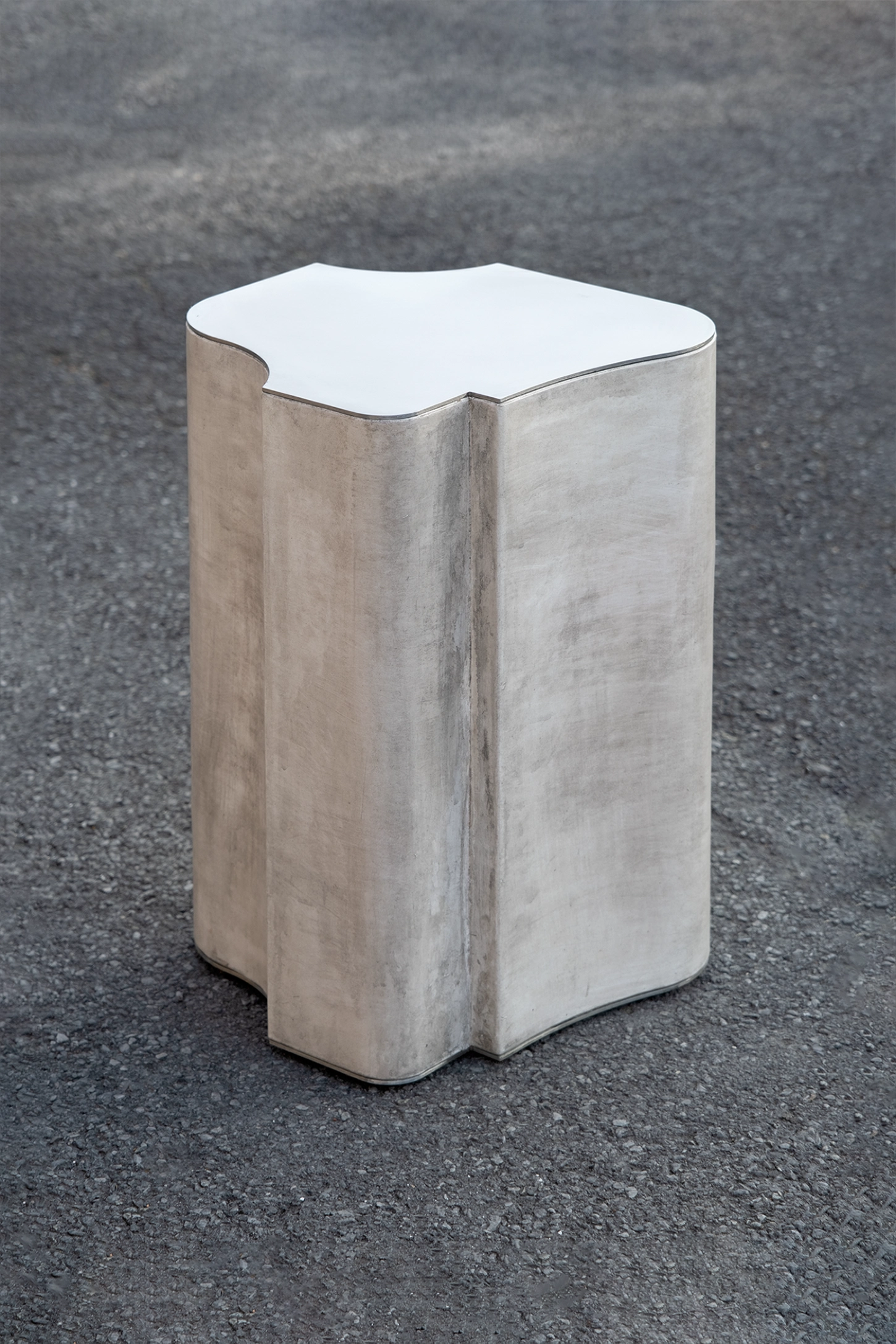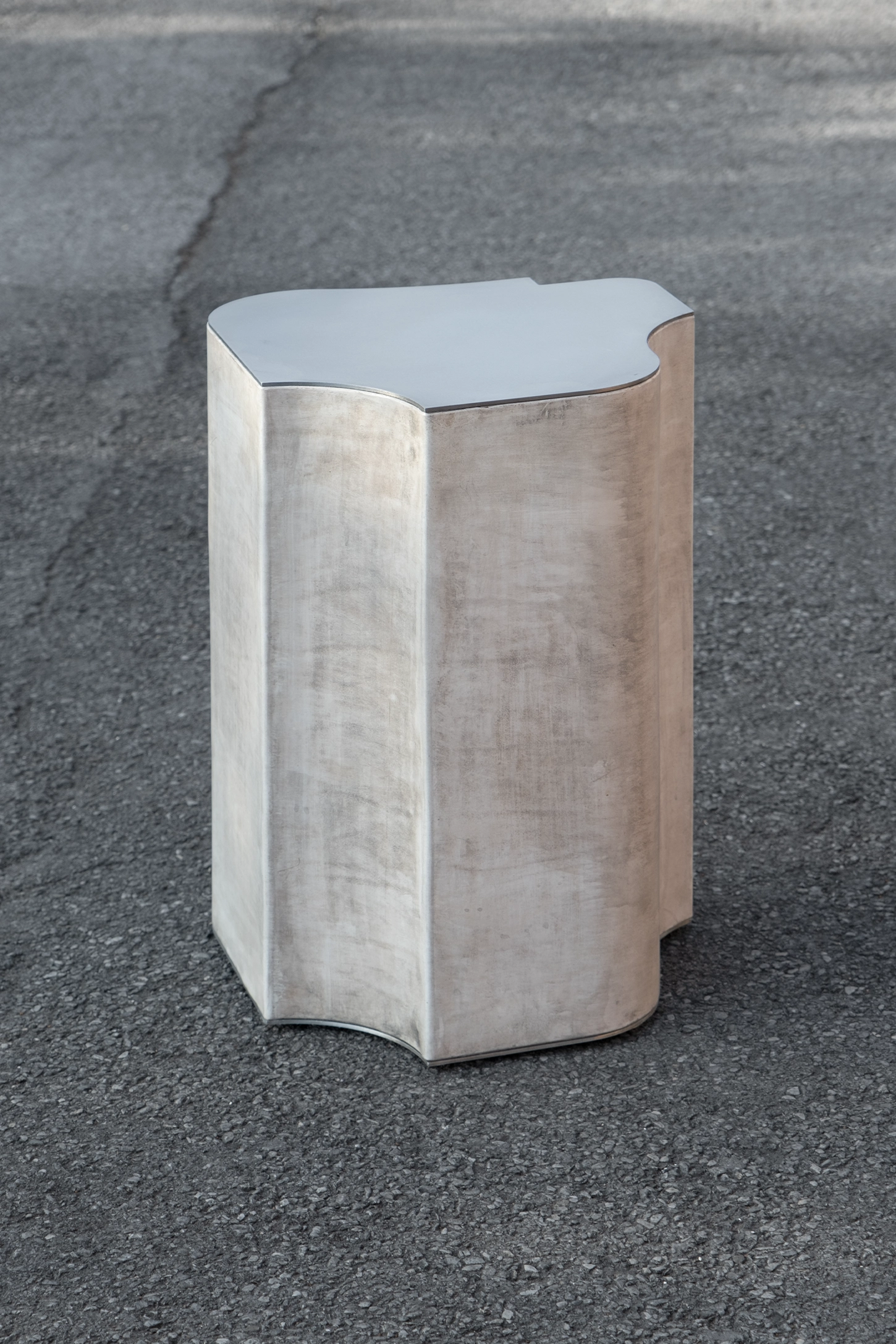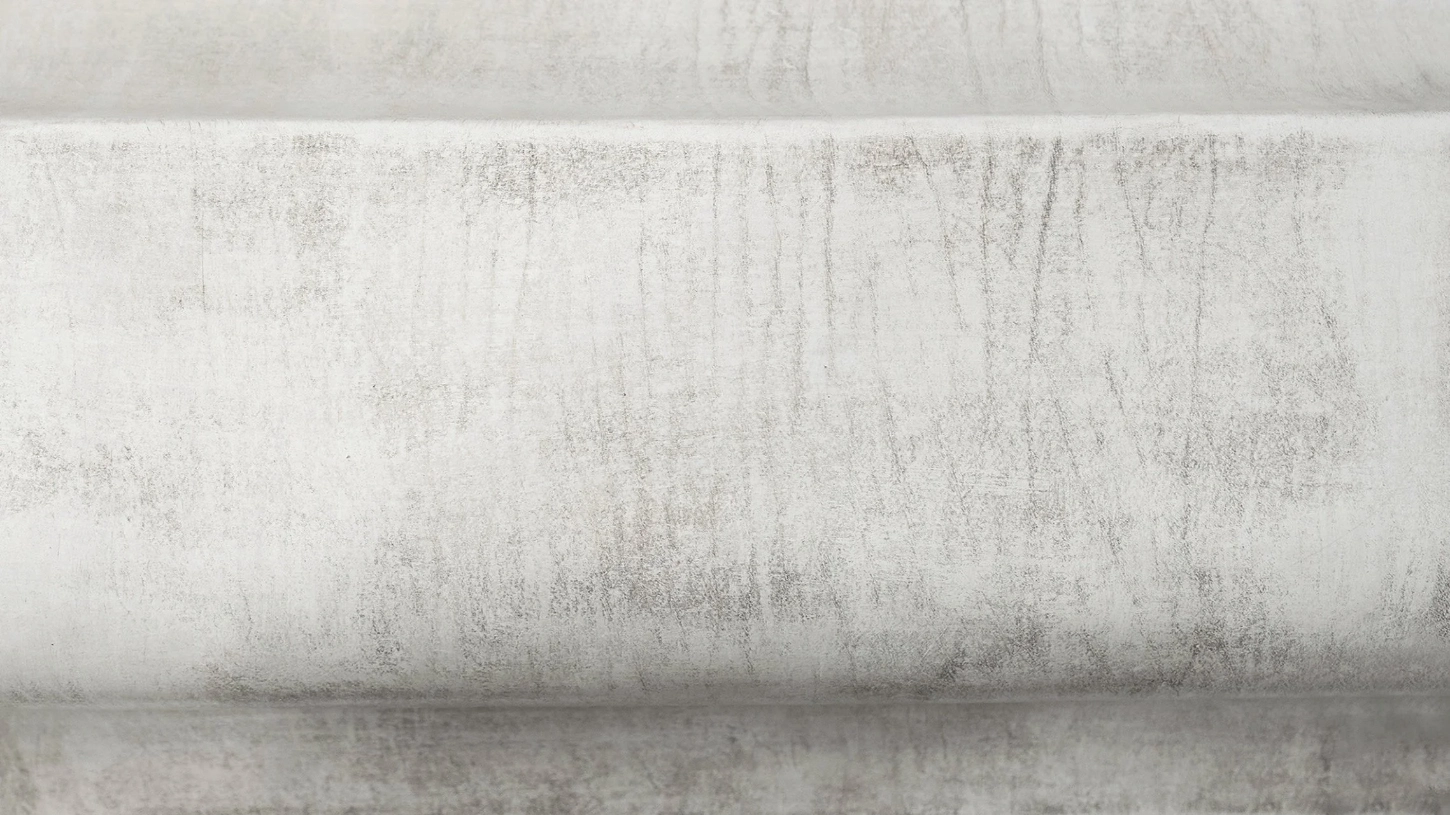Fragments by Jumandie Seys examines the physical memory of materials. Through leather and steel, the Belgian designer frames objects not as statements, but as quiet records of process, touch, and time.
Jumandie Seys works with a restrained vocabulary: leather, steel, and the traces left between them. His Fragments series turns these materials into structures that carry their own history. Each object is both a functional piece and a record of process — what happens when material is left to speak rather than be silenced by finish.
The collection consists of tables, chairs, wall pieces, benches, and other functional forms. Their construction is reduced to essential gestures: planes meeting at quiet angles, surfaces shifting from taut to loose, weight balanced with care. The silhouettes are irregular but deliberate, avoiding any sense of symmetry for its own sake.
Seys uses patinated, vegetable-tanned leather as the main expressive surface. The skin is scraped, dyed, burnished and stained, then allowed to hold its marks — scratches, pigments, subtle shifts of tone. These surfaces resist the idea of perfection. They behave more like documents than decoration.
Steel is used structurally, but without hiding its presence. Rivets, seams, and edges remain visible. Seys is not interested in smoothing transitions but in making their logic legible. Every joint shows the decision behind it.
The pieces are produced in Antwerp in small numbers, often as unique or limited editions. Their quiet character stands apart from the spectacle of many collectible design works. Instead of performing newness, Fragments acknowledges duration: the slow development of surfaces, the permanence of a gesture once made.
Shown through galleries such as Atelier Ecru and Objects with Narratives, the series positions itself in the in-between space of design and sculpture. It neither hides its function nor leans entirely on it. These works are built to exist with time, not outside of it.

